Podcast: Play in new window | Download
Show Notes: Low Maintenance Landscaping Ideas
Take action in your yard with these low maintenance landscaping ideas! If you want easy landscaping and more time, use these simple landscaping ideas to transform your yard and life! Yes, it really makes a difference!
Low maintenance landscaping can help you save time and enjoy more time with your family.
Here are the best ways to have a low maintenance landscape.
- Get rid of weeds
- Best Organic fertilizer or natural fertilizer
- Low maintenance plants
- Good Garden edging
- Plant tightly
- Best ways to get rid of weeds with mulch
Mulch is an awesome natural weed killer if you use it right. Here’s what to do:
- Get the best mulch you can. Avoid dyed mulch because it is usually full of toxins that are bad for your plants
- Mulch heavy. I mean like 4-6 inches. Anything less will get weeds. Anything greater will be a great natural weed killer by shading out the soil.
- Mulch once a year and enjoy the rest of the year
- Plant tightly to get rid of weeds
- Plan plants that will cover space completely when mature
- The more shaded your soil, the fewer weeds will grow
- Use ground cover plants to fill in gaps
Use easy plants to grow that don’t have disease problems or irrigation issues
- Best natural fertilizer for a healthy garden
The best natural fertilizer is compost. Get a good source of compost and use it around your plants for healthy plants and healthy family.
- Compost is a great organic fertilizer with tons of nutrients
- Compost improves soil life, which reduces plant problems
- Compost will not harm your family or pets like synthetic chemicals may
- How to find low maintenance landscaping plants
Here’s what to look for to select the best easy plants to grow in your garden:
- Know your sun, soil, pH, and moisture for your space
- Example, full sun, rocky clay, acidic, and drought-prone
- Know your climate zone – found here
- Plan online before going to the nursery!
- Use easy perennial plants that come back each year
- Search for plants that fit your conditions
- Most websites have plant search tools
- I recommend you check native plant options!
- Find plants that fit your zone and conditions!
- Episode 23
- Good Garden Edging
How to make good garden edging:
- Select durable lawn edging and garden edging
- Stone, concrete are most durable
- Metal, durable plastic also options
- Ensure proper depth and base preparation
- Effort to install lawn edging and garden edging is well worth it long term!
Links for today’s episode:
I’m your host with sunburned armpits Ben
Hale let’s jump in and learn how to have
a healthy beautiful yard with less work
so you can enjoy more time doing what
you love what’s up and welcome to
episode 26 of the easy living yards
podcast today we are going to be talking
about low maintenance landscaping ideas
and today we’re really going to be
focusing on the some of the just
simplest things you can do in your
landscape with the most bang for your
buck and I’m not talking about just
money here but time as well so the
things that are most valuable to you in
your landscape that you can do right now
so you can save tons of time and also
money in your landscape and have an easy
low-maintenance landscape and before
that I just want to say today is
sweltering hot it’s crazy hot out and of
course being in my mobile podcast
high-tech recording studio aka my car
man it’s extra hot I tell you so I have
the windows down you might be here and
all the birds chattering in the
background which is awesome so you know
you can’t plan this stuff to to have
such good soundtrack to your podcast so
this is it folks this is live and you’re
hearing all the birds as well and I love
it so that’s right I do have sunburned
armpits right now it’s kind of crazy
and I don’t know if you heard that but
yes that is thunder in the background of
a a storm rolling in so hopefully we get
this podcast banged out before I have to
roll up these windows it’s gonna be a
little crazy but yeah of course it is
muggy as well so yeah I might have been
outside a little too long with my tender
armpits exposed and I’m feeling the burn
now so that’s summer for you folks you
know it could have been you know
sweating away working on some project
instead I was trying to enjoy a little
bit and
you know even when I’m trying to
transform our landscape it’s good to
take a break and just you know spend
some life and you know experience just
the beauty and joy of life and and to
just have some time to breathe a little
bit so I hope you guys are spending some
time in your summer to do the same and
and you know just taking a chance to
just soak up summer and to enjoy life
and so let’s get into it today and
figure out how you can free up more of
your time and more of your resources to
do what you love okay so low maintenance
landscaping what we’re talking about on
this show is about saving time so you
can do more of what you love with your
life spend more time with your family
spend more time with your loved ones
spend time working on your passion and
making a greater impact in this life and
this all ties into your landscaping
surprisingly and I’ve talked about this
in previous episodes but if you’re
joining me today first of all thank you
for taking the time to come by and to to
learn about how you can save time in
your landscape and so what low
maintenance landscaping can do is it can
help you save time and enjoy more time
with your family or more time with what
you love more time focusing on your
priorities in life and so that’s what
we’re talking about today it’s it’s much
greater than just you know kind of being
lazy and not one to do a whole lot of
work in new yard this really goes down
to the core of what’s your purpose in
life and what what does life and your
time in your life mean to you would you
rather be you know trimming your grass
every day and and and pulling weeds all
the time or would you rather spend that
time doing something more important more
impactful more meaningful and and
personally that’s what I would like to
do and I want to share all these tips
and tactics with you to do the same so
when I sit down and think about lo mein
its landscaping there are some certain
things you can do that have the greatest
impact
and so to me here are the best ways to
have a low-maintenance landscape first
get rid of weeds second use the best
organic or natural fertilizer you can
use low maintenance plants use good
garden edging and plant tightly now
those five topic areas can really do a
whole lot to really change the way you
manage your landscape the way you look
at your landscape and the way you enjoy
your landscape and the way you enjoy
life okay so let’s get into the details
so there’s actually two really effective
ways of reducing weeds and getting rid
of weeds the first is with mulch and the
second is with plants and this might
seem a little crazy using plants to get
rid of weeds but it’s very effective and
so just think about your lawn for
example your lawn is basically a mono
crop of a bunch of grass plants so you
can keep weeds out of your lawn and it’s
usually pretty effective sometimes of
course you have weed problems in your
lawn itself but but just for the sake of
example here think about how many grass
plants you have in your lawn versus
other plants okay
so let’s tackle the first piece first
which is getting rid of weeds with mulch
so mulch is actually an awesome natural
weed killer and if you use it properly
it’s very effective now you might notice
I pointed out one thing there is that
it’s a natural weed killer for me
personally I loved saving time in my
landscape but I do not love doing it at
the expense of my health or my family’s
health or the health of anything that
comes across my landscape so that
includes my our pets and any sort of
creature critter that comes across our
landscape be it an insect or even a
fungus or hopefully it’s a good fungus
right or you know a bird and so if we
use all sorts of these synthetic
chemicals whether it be an herbicide and
insecticide they have widespread effects
and and so for me the natural process we
find the easiest natural process
possible and use that as effectively as
possible in our landscape without
compromising the health of ourselves and
those other things around us okay so
when I say a natural
killer mulch is basically a blanket of
weed prevention and so here’s what you
do to get the most out of your mulching
first get the best mulch you can so try
and avoid dyed mulch azure treated
mulches because usually it’s full of
synthetic chemicals or toxins that are
really black bad for your plants so a
lot of dyed mulches are coming from post
use materials such as wood pallets for
example and a lot of them have
preservation agents in them because when
they were used as pallets you know
companies don’t want their pallets to
just start decaying or having all sorts
of insect problems so they’re treated
with some sort of preservation agent to
prevent decay and so it fits the purpose
at the time but when these pallets are
repurposed for mulch and they’re
shredded up and died basically then you
have all these chemicals sitting on top
of your plants and it kills your soil
which is not a good thing and and
secondly it can really negatively affect
your plants as well so make sure you get
the best mulch you can by getting as
natural of a mulch you can so you want
to look for just straight-up shredded
wood product if possible or something
like you know pine needles or pine bark
and make sure of course that it’s
sustainably sourced you want to mulch
heav’nly that’s not mulch heavenly
although I guess you know that’d be
better than mulching poorly I guess know
what I mean here is mulch heavily heavy
heavy heavy heavy
muhuali alright that’s enough
and so by mulching heavily what you’re
doing is like four to six inches of
mulch because anything less will allow
weeds to start popping through so a lot
of weed seeds it’s crazy how much energy
they can harvest without starting to
reach light so just by digging out some
roots and and pulling up some moisture
and some nutrients from the soil a lot
of weed plants are highly capable at
shooting up about four to six inches of
growth before they even need sunlight to
start growing further and so by
mulching by at least four to six inches
heavy you prevent those plants from even
being able to reach the light and
therefore they wither out and die before
they reach sunlight likewise a lot of
weed seeds germinate just by any sort of
indication of light hitting the seeds
and so by putting a heavy layer of mulch
you prevent any light from ever
contacting those seeds and they likely
won’t ever germinate in the first place
okay so anything greater than that
anything greater than four to six inches
is also a great natural weed killer but
of course the more mulch you put on
generally speaking the higher the cost
goes up and also just the more effort to
put it down so if you have extra mulch
or you want to put down more much it
will definitely be more effective at
preventing weeds from coming up but I
would say the bare minimum is four
inches
ideal is six inches or greater and that
seems like a lot right but once we get
our beds well established and by talking
about the next topic which is planting
tightly that will go a long way to
reducing your mulch needs long term ok
now there’s one caveat here that I want
to point out when I say mulch heavy make
sure you don’t mulch too heavy right at
the base of your plants so there’s this
cool like I don’t know to me it’s super
fascinating but to you it’s probably
kind of like lame that I spent too much
time talking about this unless you’re a
giant plant geek and biology geek like
me but anyway so for the sake of brevity
there’s this really cool transition that
happens in plants between the root zone
and the above-ground growth zone or the
stem right so where it transitions from
root to stem a lot of plants the stem
material is not meant to be in contact
with ground the way it’s designed in
nature the way a plant grows it figures
out where this zone is and then it’s set
for life and this is especially true
with shrubs and trees so your woody type
plants they’re really not great at you
know rooting out from the stem or
something like that and so once these
tissues are
if you cover up some of the base of the
stem it can actually be really negative
toward the health of the plant and it’s
funny because I’m actually looking at
several trees right now outside of my
high-tech recording studio and there’s
mulch built up like these little like
it’s kind of like a toilet plunger shape
or like some some people call them mulch
balk a knows where it’s like a hill that
goes up to the base of the tree
and it’s good to have thick mulch around
the base of the tree but not right up to
the trunk and so if you’re actually
covering the trunk of your tree or shrub
or plant all you know above where it’s
supposed to be it in contact with the
ground you can actually really harm that
that plant and with trees especially you
can actually kill them even by just
putting a few inches of mulch up at the
base of the tree so you got to make sure
what they call it is the root flesh so
if you look at an old mature tree you
see how it kind of like flares out right
where it starts to go into the roots and
the ground well you want to make sure
that space is able to basically to
breathe I guess is a way to put it so
you want to make sure you don’t build up
the mulch right at where the tree or the
plant contacts the ground but you want
to actually so you want to you know have
make sure you allow that space to not be
covered with mulch and then build it up
everywhere else okay all right hopefully
I made that clear enough because what
you’re trying to do is avoid killing you
know a very valuable plant hopefully and
this goes throughs welford all the way
down to your flowers some of your
flowers it’s not good to do this okay
alright so the last piece I want to make
a point I want to make about mulch is
that you want to mulch about once a year
and just basically let it go the rest of
the year the mulch does the job for the
rest of the year so once a year you’re
gonna go around check out your mulch to
areas make sure it still has enough
mulch so you might not even need to
replace very much but but let’s face it
you know the mulch close to the ground
it’s slowly degrading and decomposing
and and the plus side here is that it’s
slowly building your soil building soil
health and and by building your soil
what you’re doing is you’re also
boosting your plant health so that’s
really important actually and it’s
really a huge side benefit of using
much as a weed barrier so by getting
read rid of weeds using mulch instead of
sprays or whatever your you’re also
increasing the health of your plants
long term okay so you want to check how
thick your mulch is you might just need
to add a little bit here and there but
just all you have to do is check it once
a year and that’s it and that’s awesome
right so you think of all the time you
get back from having to spray and
prevent weeds that you would normally
have to do without the mulch there
okay so mulch use mulch okay that’s the
point next piece of getting rid of weeds
is plant tightly so when you’re planning
a garden or if you already have a garden
think about how much gap space you have
okay and so if you are planning a garden
make sure you plan it where the plants
will cover the space completely
once they’re mature okay and so you know
it with certain plants that might take
five ten years before they’re mature
right so you might have some guests
early on but as long as you plan it to
where that’s that plant can expand to
fill the space eventually it will shade
out and prevent weeds from growing and
so by planting tightly and densely
without a bunch of spaces in between
your mature plants you’re preventing
weeds just by how you’ve designed your
garden and so once it matures it’s a
very little work that you have to do
because the plants not only are they
happy and they have enough space to grow
but on the flip side they’re also happy
enough to prevent weeds from growing in
that space and so you can just sit back
and relax and enjoy your landscape which
is awesome and so how do you do this
basically you check out the mature size
of your plant when you’re planning your
garden or when you’re remodeling your
garden right those so this is something
if you have a garden that has tons of
gaps right now you can go back and you
can plan by adding more plants to fill
in the space or adding some ground cover
material or whatever and and by doing so
you’re shading out your soil so the more
shaded your soil is the fewer weeds will
grow and of course to fill in those gaps
you can use anything from a shrub
to even a tree you know sometimes trees
you know they provide low branching
patterns that can shade out the soil or
you can use herbaceous perennials of
some sort so your perennial flowers you
can use so just putting in like easy
low-maintenance perennial plants can
really go a long way to shading out your
soil and preventing weeds from growing
or you can use ground cover so sprawling
ground cover plants as well can be
really effective at preventing weeds
from growing okay so so basically you
can use mulch to get rid of weeds or you
can just plant tightly to get rid of
weeds too and those are both great
low-maintenance ways to get rid of weeds
awesome
okay so now we’re gonna talk about my
favorite natural fertilizer for a
healthy garden so if you need to boost
the fertility of your garden for one I
would really question if you need to
redesign your garden or you know kind of
transition it to a lower maintenance
garden and what do I mean here well it’s
a lot easier to plan a garden around the
type of soil you have present as opposed
to trying to amend the soil to change it
to fit the plants who want to put there
so if you’re looking to have a low
maintenance landscape it’s really much
easier if you select the right plants to
fit your space so if you have very
little topsoil for example you and maybe
you have just let’s say a clay soil
right so a clay soil that’s pretty
compacted with very little topsoil well
selecting the right plants that can grow
in those low nutrient conditions that
are highly compacted there are a lot of
plants that fit every type of soil and
so finding the right plants that fit
that soil and can grow and thrive in
that condition is a lot easier than
trying to change your soil to fit you
know to a plant you want there okay so
now that I’ve said that piece sometimes
it’s just really nice to to boost the
fertility of your landscape a little bit
especially upon establishment it’ll help
your plants establish better and it’ll
just kind of give it a jump start so so
let’s say you do want to
fertilize your soil with something or
fertilize your landscape so for me
one of the best natural fertilizers out
there is compost and it’s also very
inexpensive very easy to use and it’s
very I guess it’s it’s not harmful and
so it’s relatively safe to use around
pets around children and that’s not the
same to be said about a lot of other
types of fertilizers even some of your
organic fertilizers not always the
safest because they’re more concentrated
and they can be a little bit dangerous
sometimes to use so compost is one of
the safest natural fertilizers you can
get your hands on and it’s relatively
easy to find or to make yourself and and
it has a very high benefit for your soil
so it boosts the soil life so it boosts
a lot of you know adds a lot of
microorganisms to your soil which is
really important for plant health and it
also just adds a lot of nutrients that
are available to your plants that your
plants can kind of just soak up and
start using and and not just in a high
dose all at once but over time so it’s
kind of like this slow release kind of
thing that allows your plants to have
sustained food for a long period of time
so that’s why I love compost so when it
comes to using composts get a good
source of compost and use it around your
plants for for both both having a
healthy plants like I said but also
keeping your family healthy right and
that’s important and so it’s a great
organic fertilizer as I said with tons
of nutrients it improves your soil life
reduces plant problems and in addition
it doesn’t harm your family or your pets
when you use it like a lot of synthetic
chemicals might do so if you want to
learn how to specifically use compost
effectively in your landscape check out
episode 14 where I talk all about
compost and its benefits and why it’s
awesome
and you can just check out episode 14 so
I’ll have a link in the show notes for
that okay enough about compost now
let’s talk about something really
important especially because we talked
about planting tightly already and that
is how to find low maintenance
landscaping plants so having the right
plant for your landscape is incredibly
important if we want to have a low
maintenance landscape where we can just
kind of set it let it go and do its
thing have a beautiful landscape and
spend more time doing what we love okay
so here’s how to look for and to select
the best easy plants to grow in your
garden so first know your Sun your soil
your pH and moisture for your space I
know it kind of run through this quickly
and and that’s because I’m going to
share a resource for you later on okay
so an example of this is knowing that
for my landscape I have full Sun rocky
clay it’s acidic and drought prone now
that’s not actually true for my
landscape but I just want to give you an
example okay so find that out what is it
for your landscape and specifically your
garden space because your soil in your
front yard might be different than the
soil in the back corner of your yard
okay
know your climate zone and I’ll have a
link in the show notes where you know
what zone you’re growing in because the
zone you grow in basically tells you how
cold it gets in the winter most of the
time and what plants can survive that
condition so next plan online so go
online research the plants you’re
looking for before you go to the nursery
and set foot in the nursery because
really understanding the the conditions
of the plant that it needs to grow best
is more important than what it looks
like until you’re crystal clear on what
growing conditions you have and what
plants fit those growing conditions so
once you kind of narrow that down then
you can start thinking about beauty and
say okay what plants grow well in this
condition and fit the needs of of my
aesthetic desires okay so next use easy
perennial plants that come back each
year so there are annual plants that you
have to plant each year and then they
die over the dormant season so this
could be the winter or the dry season or
whatever
and then they you have to replant them
and that’s not too great so finding the
right perennial plants so finding easy
perennial plants that grow well in your
space are really important to having a
low-maintenance landscape search for
plants that fit your conditions that
goes back to knowing the conditions you
have in your space and and the great
thing is that most websites have awesome
plant
search tools that are now available free
plant search tools and I recommend for
sure that you check native options for
your space there’s a lot more native
plants that are available these days as
beautiful options for your landscape so
many native plants can really be just a
beautiful addition to your landscape and
likewise they also Express the character
of your region which is really cool to
that you have your own regional
character that somewhere else may not
have so so plants native to say southern
Florida can really express the the place
of southern Florida and if I were to
plant all those things here in southern
Ohio for one they would kind of look out
a place and for two they’d be a lot of
work most likely and so expressing the
bio region that you live in is is a
really valuable thing and can also lead
to a very low maintenance landscape okay
so the last piece I want to say here is
I recorded a whole episode on finding
and selecting low maintenance plants and
so check out episode 23 for low
maintenance plant ideas and really drill
down on how to get the best plants for
your space ok the last piece I want to
say now is about good garden edging most
times we get these really bad weed
problems right at the edges of a
transition so this could be at the edge
between a garden bed and your lawn for
example and so in those transition
spaces it’s important to have good
durable edging it can go a long way to
reducing work a lot less time using a
weed eater to trim around things and a
lot less time using weed chemicals to to
kill weeds okay so when it comes to good
garden edging make sure you select
durable lawn edging and garden edging
and this is stuff made out of stone and
concrete are the most durable you can
also find metal and durable plastic
options as well so the plastic edging
there’s a huge variety of plastic edging
make sure you get durable UV resistant
edging if you’re going with plastic and
and make sure you check as well you know
the Internet is such a great resource
you can check how durable how well
reviewed it is online so check if you’re
thinking about plastic for sure because
there’s some really bad plastic stuff
out there for one you know it’s
something that you take a lot of time
putting this stuff in installing it and
then maybe a year later you’re already
having problems with it so make sure you
get a good durable edging and if you’re
going with plastic make sure you
research it really well to make sure it
really is durable and so check online
reviews for that read about it make sure
it’s the right stuff okay alright so
when it comes to edging make sure you
ensure the proper depth and and base
preparation so so make sure you get
edging that doesn’t just go down you
know an inch or two into the ground but
really something that you install and do
it properly to prevent it from heaving
up in frosty conditions over the winter
and and that sort of thing and that is
what I mean by base preparation as well
so if you’re laying down say a stone or
masonry edging they’re very beautiful
and they can be incredibly durable but
you got to make sure you prepare the
base right so make sure you maybe dig
down a little bit deeper and put down a
gravel underlayment that can help
drainage as well as prevent frost
heaving which is really important so
when it comes to this stuff check online
for a ton of awesome resources on
YouTube for example about laying down
stone edging or masonry edging and just
edging in general there’s a ton of great
video resources out there that you can
find okay now the last thing I want to
say about edging here is that the effort
to install lawn edging or garden edging
is well worth it long term because this
reduces your maintenance needs and of
course the thing
here is selecting the right edging that
doesn’t have weed problems that doesn’t
have maintenance issues and that doesn’t
break down quickly so it’ll last you a
long time okay so that’s basically what
I’ve got today so just to cap it again
is getting rid of weeds using heavy
mulch and planting tightly using the
best organic fertilizer and naturally
natural fertilizer out there which is
compost using low-maintenance plants for
your landscape and using good quality
garden edging all of these things go a
really long way towards making sure you
have a low-maintenance landscape that
helps you save time and enjoy more time
with your family now make sure you check
out the show notes guys for the links I
talked about in the previous episodes as
well as your USDA zone and figuring that
out if you have any questions make sure
you head on over to easy living yards
comm slash pod and right at the top of
the page there you’ll see a link to
contact me with any questions you might
have and you can also get featured on
the show if you like now this stuff
seems just overwhelming to you or you
need a little help that’s cool because I
offer consultation you could check it
out at easy living yards calm slash
consulting to see the options there you
can get in touch with me work one-on-one
and we can figure out your problems with
your landscape specifically and help you
take action to save time in your life
and spend more time with your family and
what’s important with that guys thanks
for tuning in make sure you live with
passion and make tomorrow better than
today
[Music]

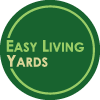
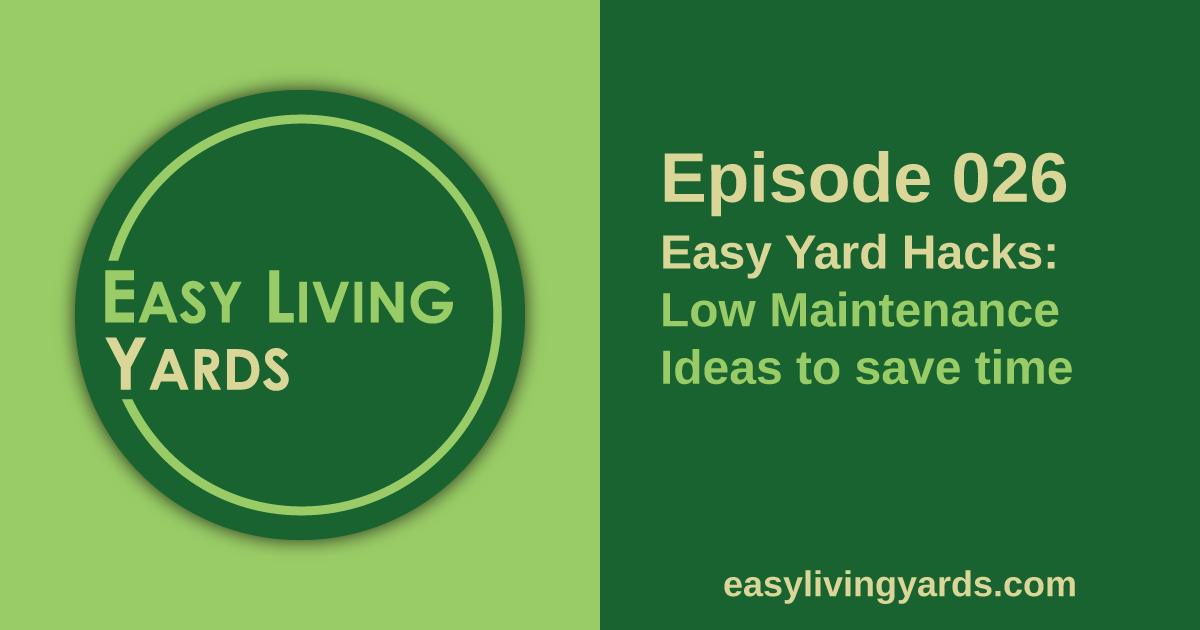
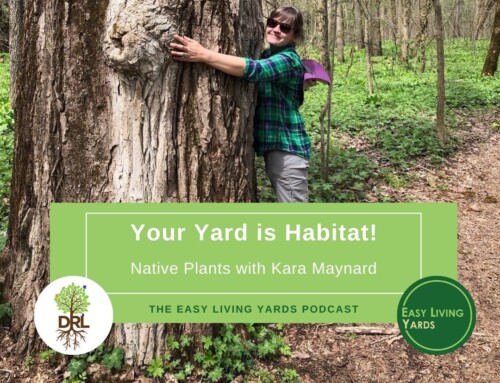

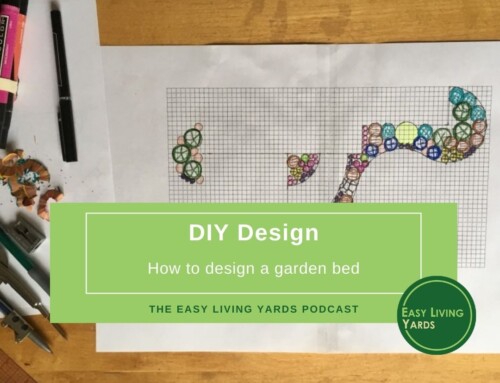

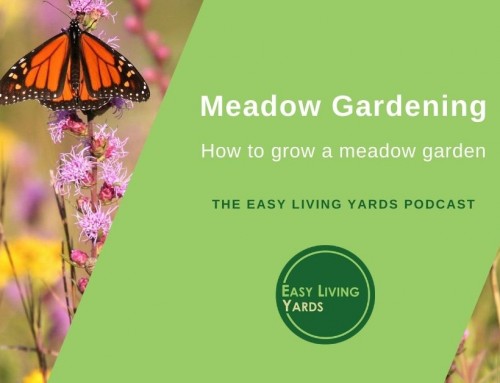
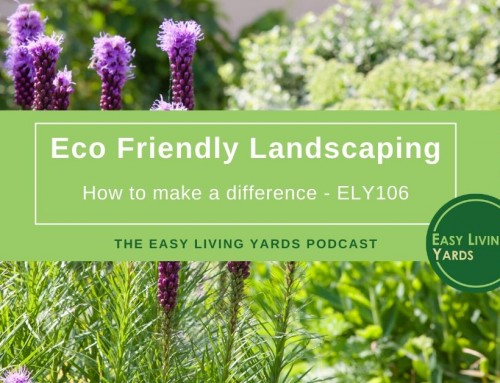
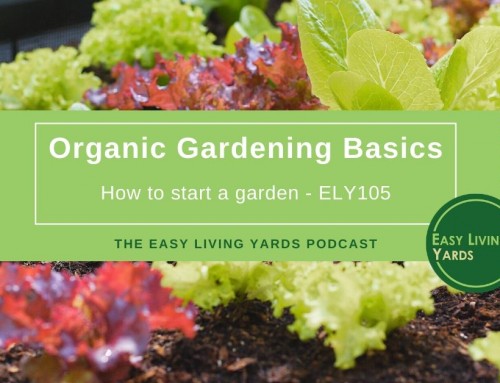
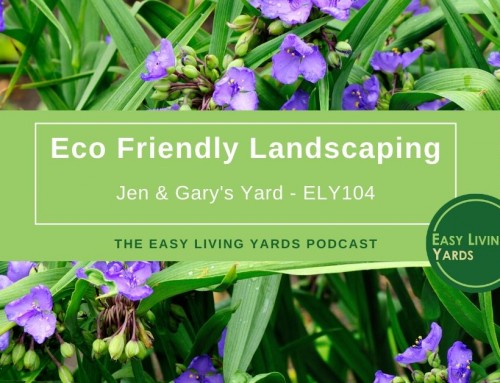
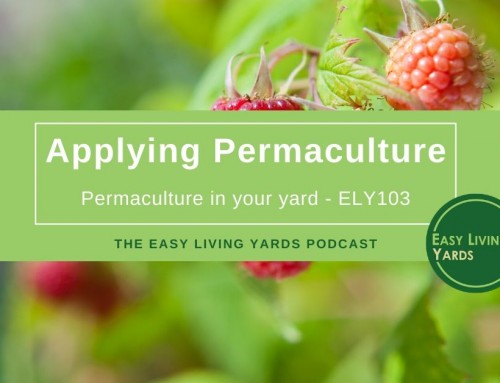
Leave A Comment